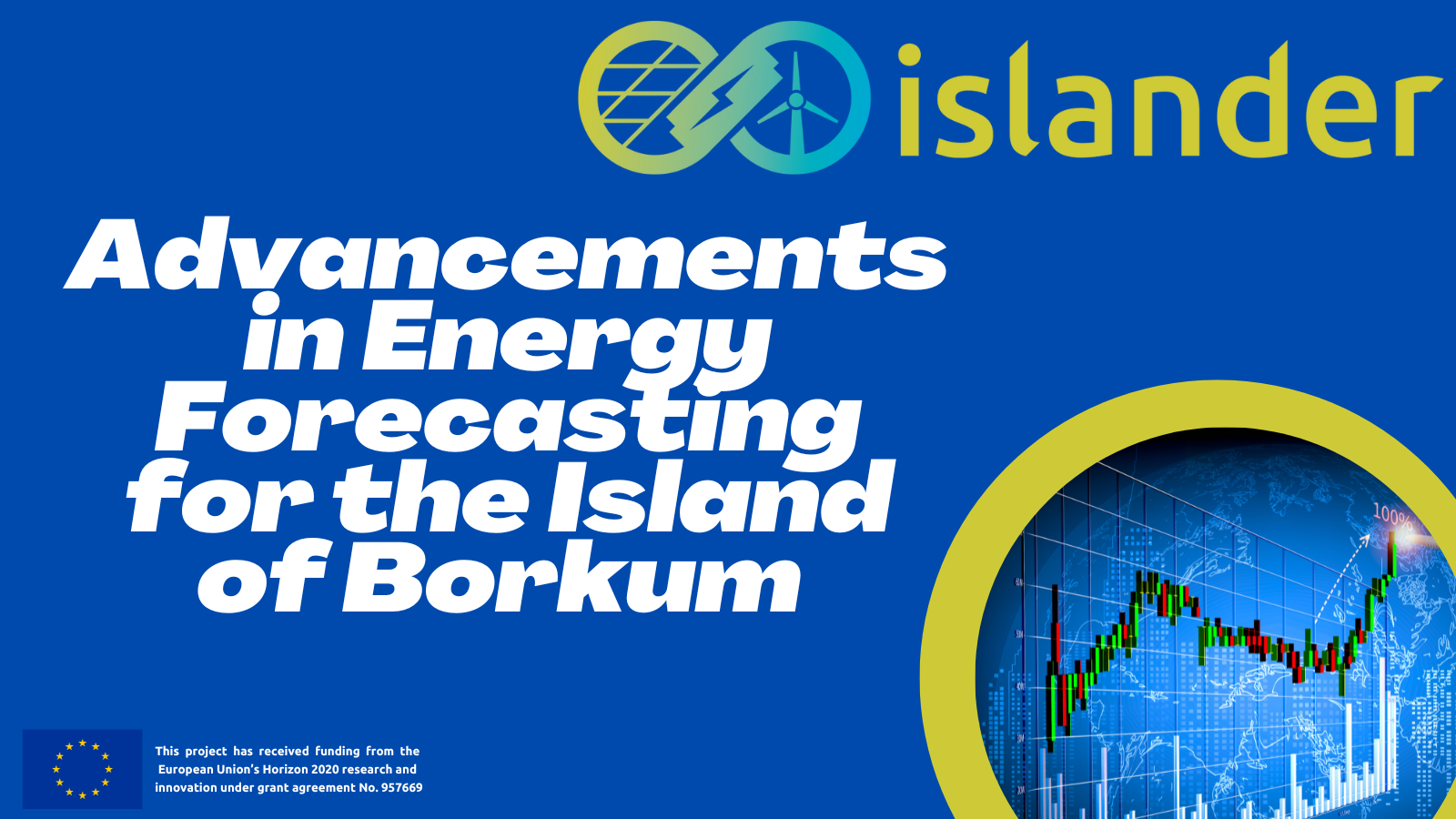
One of the key objectives of the ISLANDER project is to develop and integrate a smart IT platform on Borkum. The IT platform acts as an aggregator and distributed energy resources management system to optimally decide whether the generated renewable energy should be self-consumed, stored or sold to the energy market. It consists of several modules such as data acquisition and big data management, monitoring, control algorithms, market integration tools and forecasting modules.
An important feature of the platform is to be able to predict the energy needs and energy production of the island of Borkum at a global level and individual level (households and businesses). Energy needs and production are determined by various factors, such as the weather conditions, but also the end-users’ energy demand and supply. At the end of July, project partner elmy published two deliverables, focusing on forecasting the individual energy demand and renewable supply generation of Borkum’s end-users.
DELIVERABLE 4.1: INDIVIDUAL ENERGY DEMAND FORECAST MODELS
The main objective of deliverable 4.1 is to develop energy demand forecast models to optimize energy flexibility on an individual scale. This model predicts the amount of power consumed by end-users (businesses and households) during different times of the day, which is crucial for effective energy management within the smart IT platform of the ISLANDER project.
To achieve accurate forecasts of end-users’ energy consumption, historical consumption data (at least one year’s worth) and current consumption data were needed, along with information on end-users’ behavioural habits. By linking this data together, the project gained insights into how different types of end-users consume energy on a daily basis. This information is invaluable for optimizing energy storage and utilization of energy produced by photovoltaic (PV) panels.
Behavioural analyses showed that energy consumption tends to be highest during the middle of the week, particularly in the morning and evening, due to various activities such as work, TV viewing, and laundry. By combining end-users’ demographics with energy consumption reporting, the project aims to create profiles for different types of end-users. These profiles provide valuable insights into how various groups consume energy differently. However, the end-users’ profiles are still in the preliminary stages as data collection is ongoing.
Initially, there was a lack of historical consumption data, prompting the project team to explore alternative data sources. The installation of smart meters on the island of Borkum during 2023 will provide real-time data on end-users’ energy consumption. This data will be matched with energy consumption reporting and linked to behavioural and forecast data.
Read the full deliverable here!
DELIVERABLE 4.2: INDIVIDUAL RENEWABLE SUPPLY GENERATION FORECAST MODELS
Deliverable 4.2 focuses on developing renewable supply generation forecast models, specifically for wind turbines and photovoltaic (PV) parks on the island of Borkum. Accurate forecasting of renewable energy production is essential for effective energy management at the household and business levels, especially in the context of smart grid technologies, but also at a global level.
The project aims to create a 2-day ahead forecast with an hourly granularity for PV and wind turbine power generation, ultimately contributing to the computation of the island’s overall renewable energy production. Historical data from three main sources, including a wind farm and two PV parks, spanning over four years (January 2017 to January 2021), was collected from Borkum’s utility company.
The short (a few hours) to medium-term (a few days) forecast of power production from individual renewable assets (PV and wind farms) is required as an input for the energy management system (the smart IT platform) in order to optimize energy flows and storage on the island. The forecasts are used as inputs for the global production forecast model, which will help predict the hourly renewable production on the island of Borkum. They are also useful at an individual level to predict the energy produced by the PV panels. This comprehensive approach empowers users to make informed decisions about energy usage, optimizing self-generated power utilization, and promoting energy self-sufficiency, cost savings, and environmental sustainability.
Read the full deliverable here!
Together with the previous deliverables on weather and energy price models as well as on macroscopic energy supply and demand forecasting models, the ISLANDER project is making progress in energy forecasting for the island of Borkum. The development of individual energy demand forecast models and individual renewable supply generation forecast models represents a milestone towards efficient energy management, renewable energy utilization, and sustainability for the island community. As data collection and analysis continue, the project aims to provide precise forecasts that will shape the future of energy consumption and production on Borkum.
Follow us